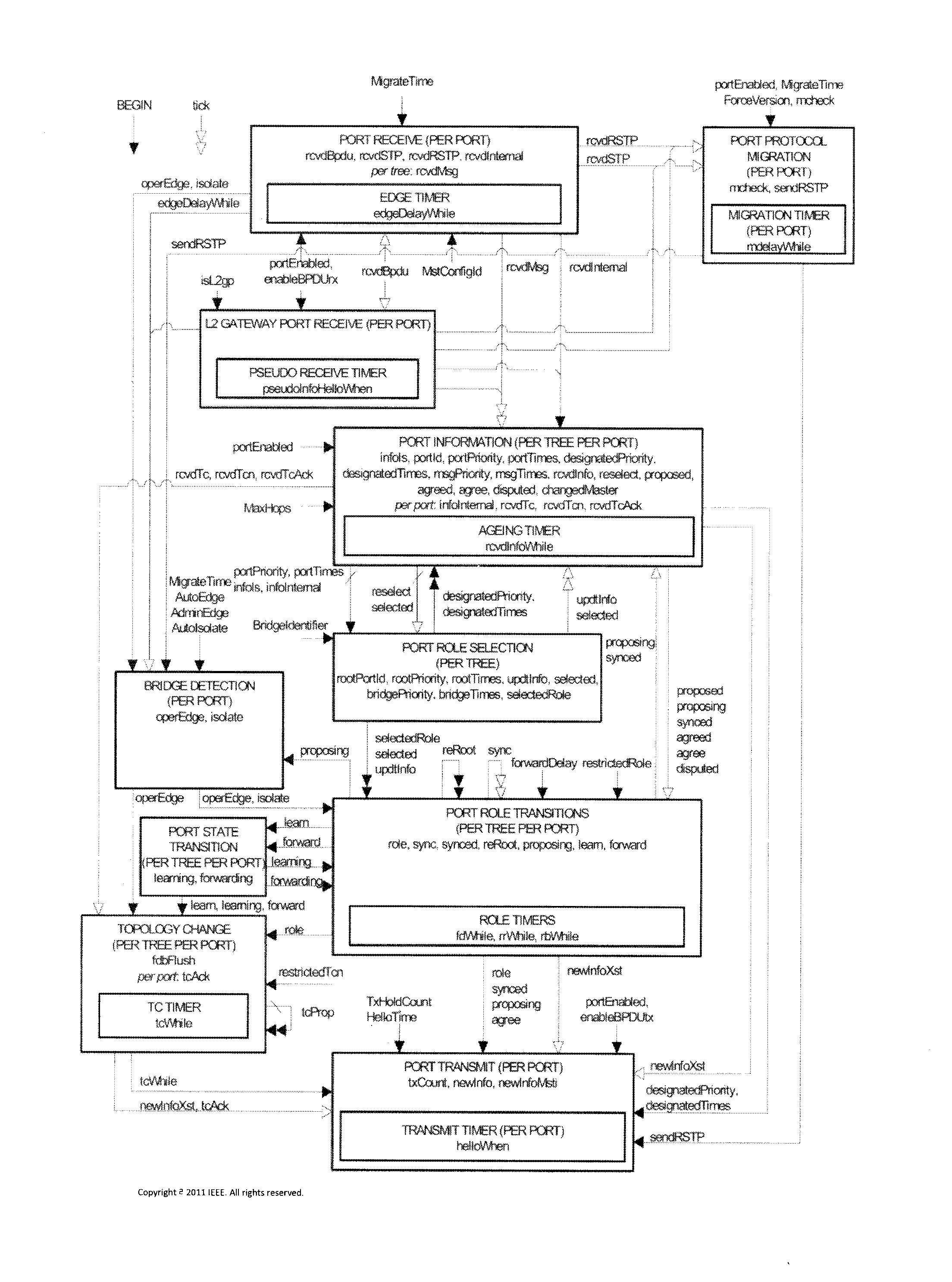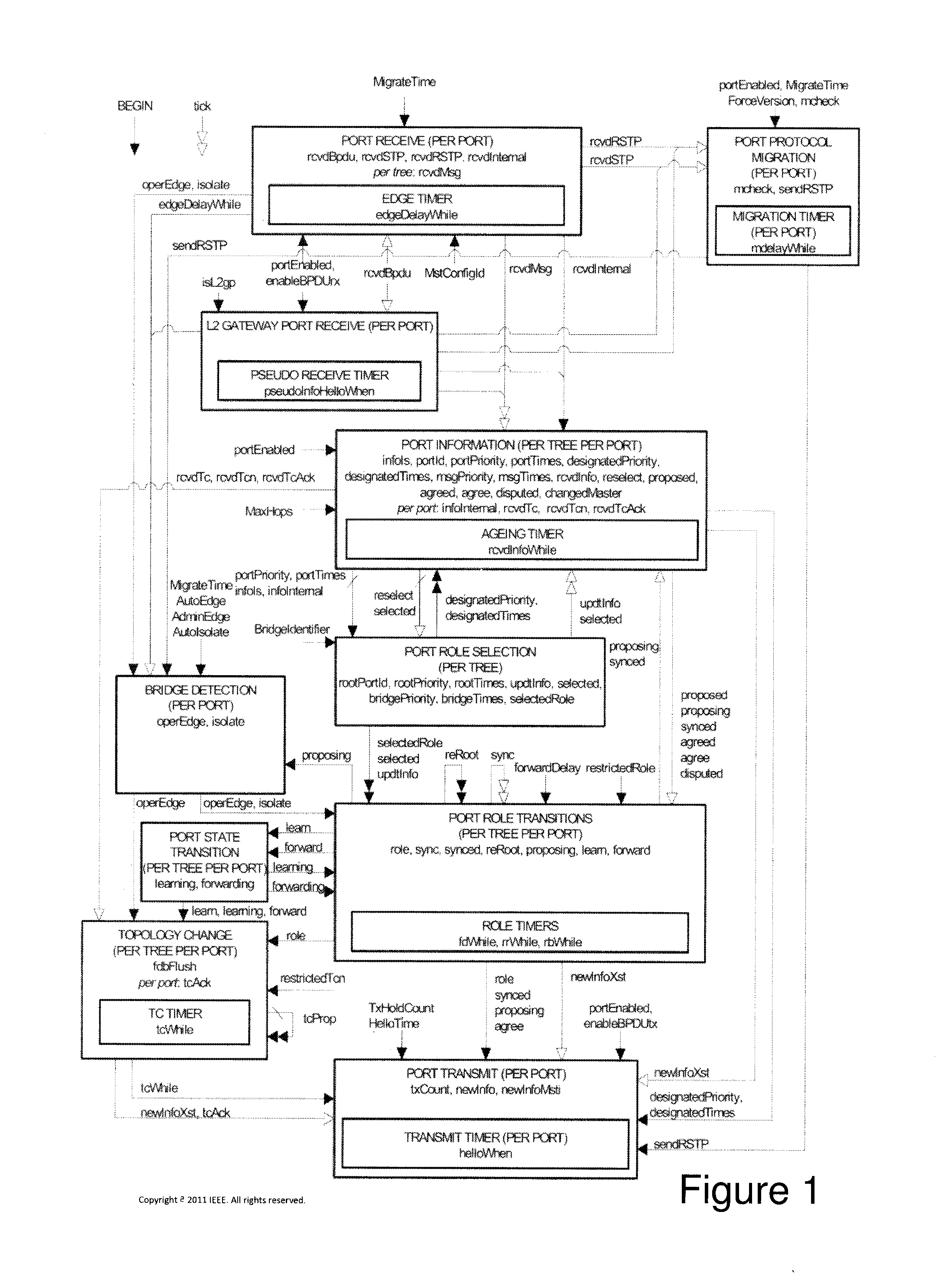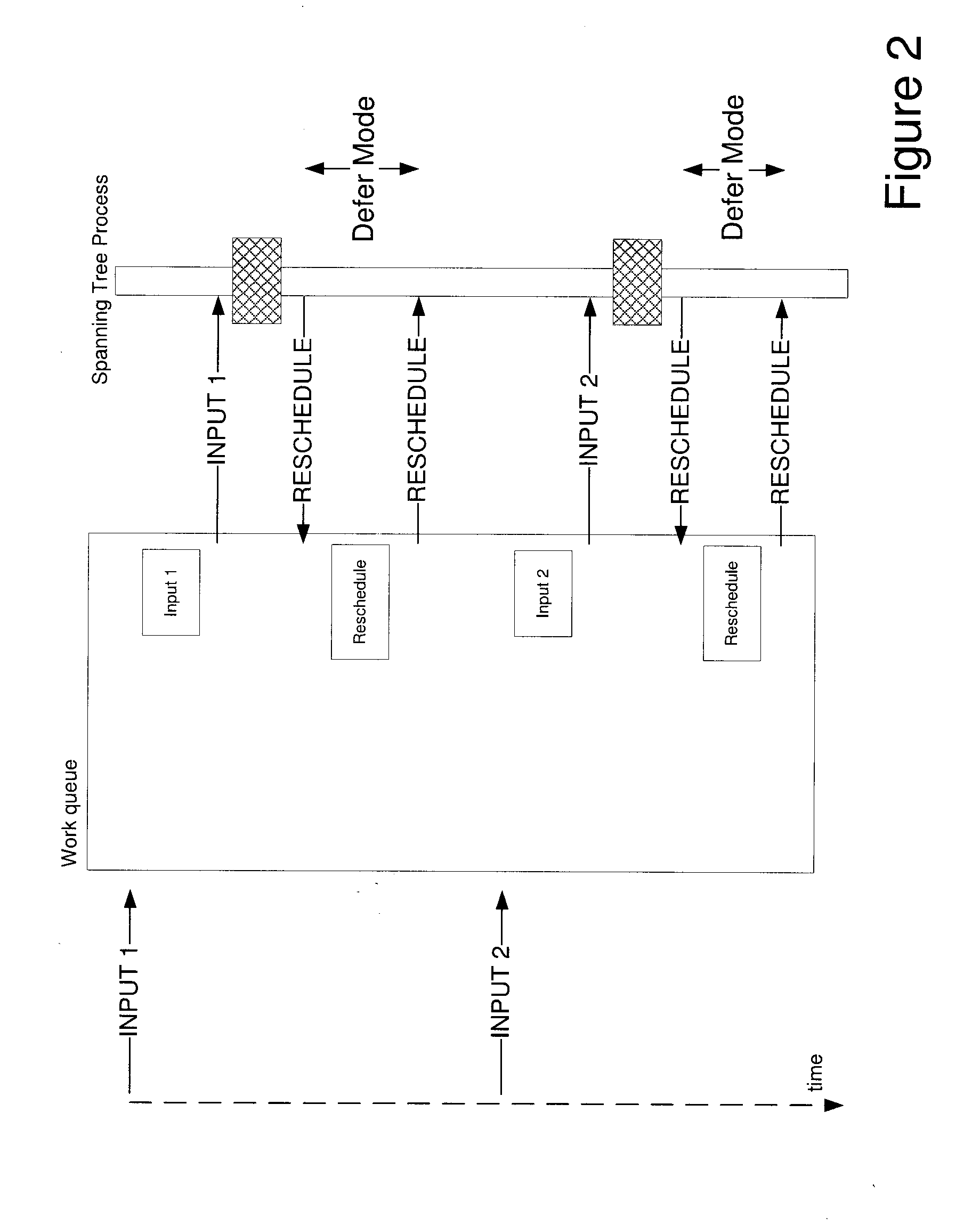Spanning tree protocol
a spanning tree and protocol technology, applied in the field of spanning tree protocol operation, can solve the problems of affecting the operation of the protocol, and affecting the stability of the network, so as to reduce the value of the token counter
- Summary
- Abstract
- Description
- Claims
- Application Information
AI Technical Summary
Benefits of technology
Problems solved by technology
Method used
Image
Examples
Embodiment Construction
[0041]However, under high load conditions, the state machines may not have completed their operation and returned to a stable state before further inputs have arrived which may again require the state machines to restart. Furthermore, any break between running of the state machines may not allow sufficient time for other tasks to be run.
[0042]The present invention aims to deal with this issue by running the state machines as normal under normal load conditions but deferring the running of the state machines when the system is under load. It is generally undesirable to defer running the state machines after receiving an input, as this would delay the establishment of the new spanning tree for the network. However, the present invention provides a system which recognises when a system is under load and only defers running of the state machines under those conditions to prevent the perhaps more undesirable situation of overloading the bridge controller.
[0043]In this way, when the syste...
PUM
 Login to View More
Login to View More Abstract
Description
Claims
Application Information
 Login to View More
Login to View More - R&D
- Intellectual Property
- Life Sciences
- Materials
- Tech Scout
- Unparalleled Data Quality
- Higher Quality Content
- 60% Fewer Hallucinations
Browse by: Latest US Patents, China's latest patents, Technical Efficacy Thesaurus, Application Domain, Technology Topic, Popular Technical Reports.
© 2025 PatSnap. All rights reserved.Legal|Privacy policy|Modern Slavery Act Transparency Statement|Sitemap|About US| Contact US: help@patsnap.com



